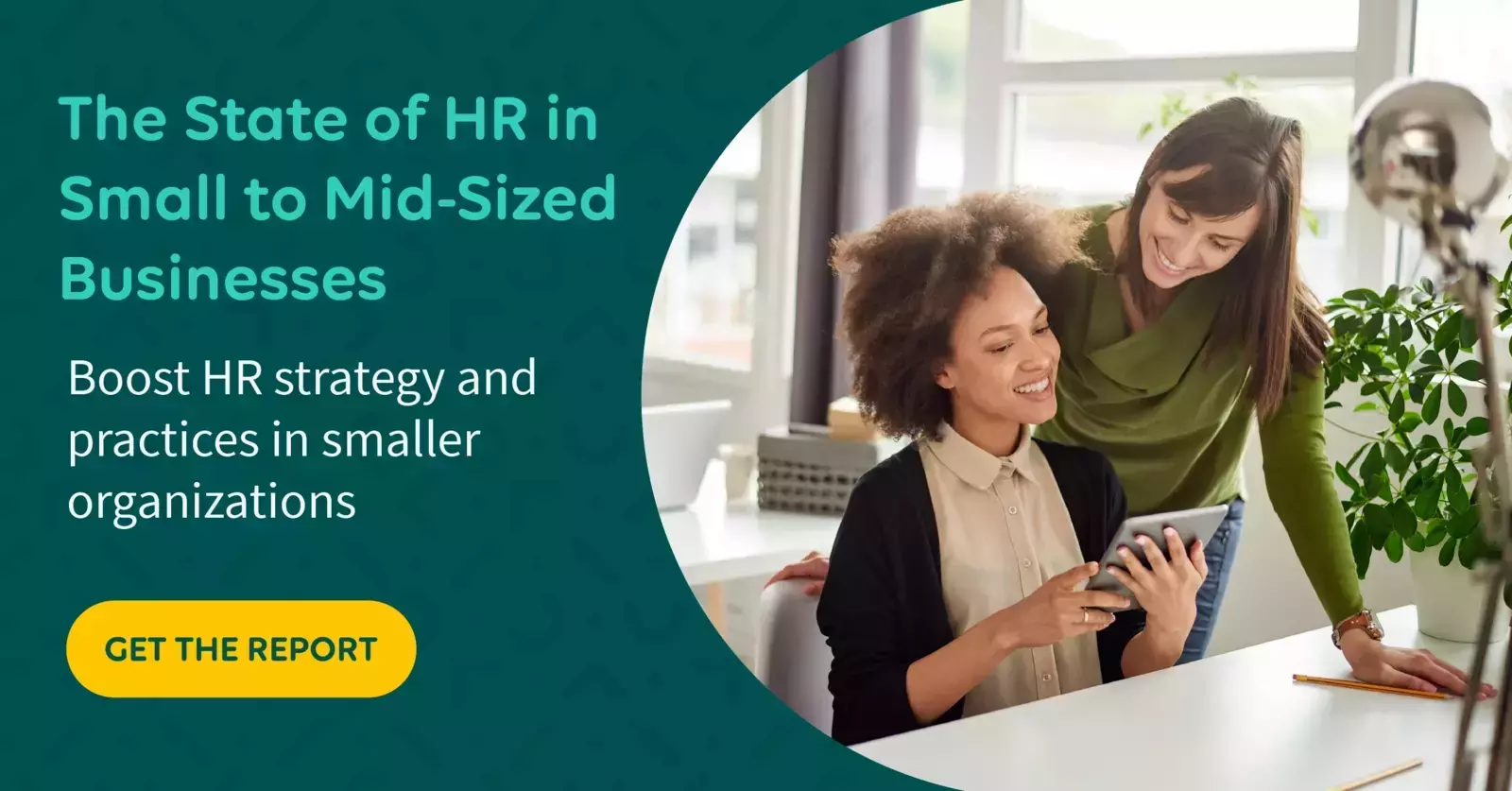This is third installment of our COVID paradox series, where we explore the counterintuitive economic trends driving the Great Resignation and discuss opportunities for employers to take action. We’ve discussed employee demands for greater flexibility, which is a primary factor driving the Great Resignation. Today, we’ll explore another influencing trend: the changing experiences and expectations around employee health and wellbeing.
Psychologically, human beings are hard-wired to recognize patterns and build habits; we evolved to be uncertainty-averse. Uncertainty and its accompanying loss of control triggers the “fight, flight, freeze” response, and chronic exposure worsens everything from motivation and memory to sense of purpose, meaning, and wellbeing. The pandemic reminded us all that health was precarious and thrust us into a continued state of concern over the wellbeing of ourselves and our loved ones. In this way, the pandemic served as a universal source of trauma, putting a spotlight on mental health and making it a primary topic of conversation.
Under normal circumstances, approximately one-fifth of employees suffer from mental health disorders and nearly half of Americans have a family member or close friend who’s been addicted to drugs and alcohol. But we are not living under normal circumstances. In our current environment, mental health challenges have become the norm, not the exception. So how can HR prioritize the right health and wellbeing experiences to mitigate this massive impact on employees?

The increasing risk and cost of mental health issues
A recent Harvard Business Review survey found that 76 percent of respondents reported at least one symptom of a mental health condition in the past year, up from 59 percent in 2019. Seventy percent of workers say this has been the most stressful year of their careers and that the pandemic has increased their feelings of burnout at work by at least 30 percent. Meanwhile, a growing number of studies suggest that the COVID-19 pandemic has spurred increased drug and alcohol usage, including increased rates of on-the-job drinking.
The cost for employers is significant: 200 million workdays are lost every year due to depression, and the World Economic Forum reports that by 2030, the global cost of mental health problems will total more than $6 trillion. What’s more, it’s clear that employees have been looking to their employers for support — in an IBM Institute of Business Value survey earlier this year, two of the top nine reasons people left their jobs were related to wellbeing.
Beginning with burnout
While the pandemic worsened mental health across the board, skyrocketing rates of burnout were the most prevalent effect, and often served as a trigger for the development of more severe mental health cases. Microsoft Teams data reveals that workers have been in significantly more meetings, working longer hours, and managing more incoming chats than pre-pandemic norms—including twice as many after-hours messages.
At its core, burnout is a work problem. Psychologists have pinpointed six primary factors that contribute to burnout when poorly implemented, and they’re almost all entirely out of an employee’s control: Workload, autonomy, recognition, culture, fairness, and meaningful work.
In other words, the problem is not with the burnt out, but what burned them.
This also explains why many of the measures employers have taken to address burnout have fallen flat. A McKinsey study published in September 2020 noted that many companies had “expanded services related to mental health, such as counseling and enrichment programs,” but that fewer had “taken steps to adjust the norms and expectations that are most likely responsible for employee stress and burnout.” Advocating for meditation or engaging in self-care is an important part of the puzzle, but this mindset places the blame or responsibility on the individual rather than forcing managers and organizations to address underlying issues.
Many psychologists agree that the keys to preventing burnout are threefold:
- Place fewer demands on employees
- Give employees more autonomy and control over how to handle those demands
- Provide employees with the necessary support to address their demands
Fortunately, all three of these are well within an organization and manager’s power, and more and more leaders are seeing the benefit when faced with the cost of turnover, absenteeism, and lost productivity.
The (rarely discussed) reality of substance abuse
Substance abuse is estimated to cost employers more than $442 billion per year in absenteeism, increased healthcare expenses, and lost productivity. Between 1998 and 2018, approximately 450,000 people died form an opioid overdose, and an estimated 88,000 people die from alcohol-related causes each year. Alcohol abuse is the third leading preventable cause of death in the US.
Unfortunately, several studies have shown that substance use increased significantly during the pandemic. In one study, nearly half of all respondents admitted to drinking while on the clock and working from home. The pandemic is also blamed for increasing relapse rates of the more than 22 million Americans who are actively in recovery from substance use disorder, many of whom rely on recovery communities and social supports that were eliminated or moved to Zoom.
Employers must be aware of the impact this trend could have on their workforce.
Due to the nature of and stigmas associated with substance abuse, many affected are reluctant to seek help. Concerns about confidentiality, job security, and social standing often translate to reluctance in utilizing treatment resources, including employee assistance programs and inpatient/outpatient facilities.
For HR, developing internal policies, empathetically guiding employees toward available resources, and enforcing policies are all vitally important. Train managers on both the early signs of psychological struggle as well as how to intervene.
Like all chronic diseases, substance abuse gets worse over time and is often easier to treat in earlier stages. Trained managers who can spot and cautiously address earlier signs of concern may be able to avoid waiting until a failed drug test, accident, or incident forces HR’s hand, benefitting both the employee and the organization.
Physical safety
Mandates of all kinds are a highly politicized and contentious topic, but the fact is that no matter how legislation shakes out, employers must contend with the weighty responsibility of keeping their people safe when we are still in the midst of a global pandemic.
Many employers have been forced to grapple with the challenges of revised safety measures and innovating on new business procedures in their warehouses and workspaces since the beginning of the pandemic. There have been many lessons learned along the way.
For others, the majority of their people have been working from home for a long time. These employees were — are — still very concerned about the risks associated with coming back to the office, which employers now have to grapple with. Employers need to be developing science-based initiatives to maximize office safety, and they also need to clearly communicate with and reassure their people.
Fortunately, there are architectural and engineering choices that can enhance infection control and safety indoors. Business leaders should consider things like improving air exchange and air filtration, reducing the number of people in the office at any given time, making physical adjustments to open-floor work stations, maximizing the use of outdoor spaces, and adding protective shield barriers between desks.
Many of these safety measures rely on reducing the number of people coming together at a given time. This can be problematic considering a primary reason most leaders and employees are excited to return to the office is to increase collaboration and face-to-face interactions. As such, business leaders must strategically assess their own goals and workplaces, potentially reimagining things like meeting locations and creating “invite caps” for meetings.
Conclusion: Health and wellness will remain center stage going forward
It’s unfortunate that it took a global pandemic for employees and employers to place such a high value on wellbeing, but I expect this trend to continue amplifying. Employees have had ample time to reflect on their purpose and the kind of life-work balance they desire, and employers of all sizes are keenly aware of well-being’s impact on the bottom line. If you want to know more about where you'll need to focus your efforts in HR, check out our 2022 HR Megatrends and help your organization keep adapting to the rapid pace of change.
Stay tuned for our next installment, where we'll explore employees’ growing demand for meaningful purpose — and organizations they are proud to stand beside.



